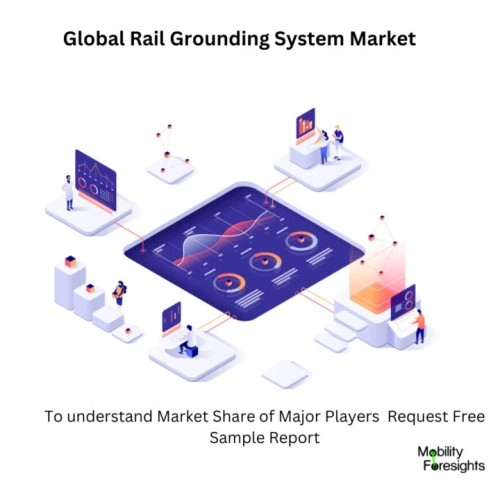
- Get in Touch with Us

Last Updated: Apr 25, 2025 | Study Period: 2024-2030
It is an essential part of the train systems electrical infrastructure. Its main objective is to guarantee that trains run safely and effectively by offering a steady channel for electrical current to travel into the earth.
The system is made up of a number of components that are intended to safeguard users, the train's machinery, and neighboring buildings against the risks associated with electrical problems and lightning strikes.
The grounding grid, which consists of linked wires buried in the ground, is a crucial part of a rail grounding system. To prevent the development of dangerous voltage levels, the grounding grid offers a low-resistance conduit for fault currents to pass into the earth.
Additionally, it aids in balancing electrical potential throughout the train system, lowering the possibility of electrical shock for both staff and passengers.
Bonding conductors, surge protection equipment, and lightning protection systems are further components of the rail grounding system in addition to the grounding grid. Bonding conductors ensure consistent ground potential across the rail network by establishing electrical continuity between metallic components such as rails, tracks, and signaling equipment.
To defend against voltage surges brought on by lightning strikes or power fluctuations, surge protection devices are fitted. These gadgets direct extra electrical energy towards the earth, shielding and defending delicate electronic equipment from harm.
The impact of lightning strikes on the rail infrastructure can be significantly reduced thanks to lightning protection technologies. They are made up of lightning rods, conductors, and grounding electrodes that are put in carefully planned locations to deflect lightning strikes and offer a secure pathway for the ensuing electrical energy to dissipate into the ground safely.

The Global Rail Grounding System Market accounted for $XX Billion in 2023 and is anticipated to reach $XX Billion by 2030, registering a CAGR of XX% from 2024 to 2030.
The innovative rail grounding system from Schunk Transit Systems was unveiled. The technology is intended to be simpler to install and more effective than conventional rail grounding systems.
Launched by Siemens Mobility is a new rail grounding system. Compared to conventional rail grounding systems, the system is intended to be more robust and corrosion-resistant.
The new rail grounding system from Thales was unveiled. Compared to conventional rail grounding systems, the system is intended to be more versatile and adaptive to various railway situations.
| Sl no | Topic |
| 1 | Market Segmentation |
| 2 | Scope of the report |
| 3 | Abbreviations |
| 4 | Research Methodology |
| 5 | Executive Summary |
| 6 | Introduction |
| 7 | Insights from Industry stakeholders |
| 8 | Cost breakdown of Product by sub-components and average profit margin |
| 9 | Disruptive innovation in the Industry |
| 10 | Technology trends in the Industry |
| 11 | Consumer trends in the industry |
| 12 | Recent Production Milestones |
| 13 | Component Manufacturing in US, EU and China |
| 14 | COVID-19 impact on overall market |
| 15 | COVID-19 impact on Production of components |
| 16 | COVID-19 impact on Point of sale |
| 17 | Market Segmentation, Dynamics and Forecast by Geography, 2024-2030 |
| 18 | Market Segmentation, Dynamics and Forecast by Product Type, 2024-2030 |
| 19 | Market Segmentation, Dynamics and Forecast by Application, 2024-2030 |
| 20 | Market Segmentation, Dynamics and Forecast by End use, 2024-2030 |
| 21 | Product installation rate by OEM, 2023 |
| 22 | Incline/Decline in Average B-2-B selling price in past 5 years |
| 23 | Competition from substitute products |
| 24 | Gross margin and average profitability of suppliers |
| 25 | New product development in past 12 months |
| 26 | M&A in past 12 months |
| 27 | Growth strategy of leading players |
| 28 | Market share of vendors, 2023 |
| 29 | Company Profiles |
| 30 | Unmet needs and opportunity for new suppliers |
| 31 | Conclusion |
| 32 | Appendix |